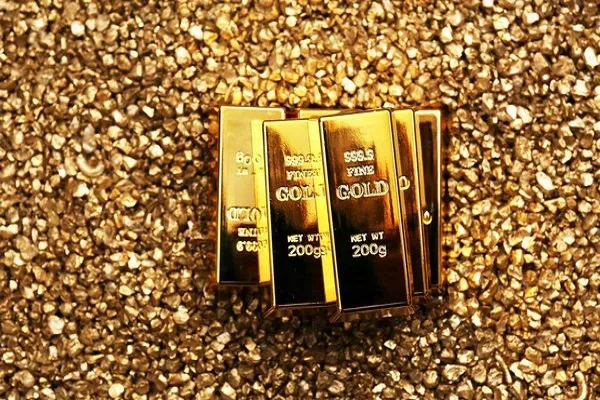Investing in gold has been a strategy employed by individuals and institutions for centuries. Gold’s status as a store of value and a hedge against economic uncertainties has remained consistent throughout various market cycles. Among the different forms of gold investment, gold coins have a unique appeal to collectors and investors alike. In this article, we explore the factors influencing the potential appreciation of gold coins and analyze whether gold coins are likely to increase in value over time.
Historical Perspective
Gold coins have a rich history dating back to ancient civilizations. Their intrinsic value and aesthetic appeal have made them sought-after items for collectors and investors. Throughout history, gold coins have served as a medium of exchange, a symbol of wealth and power, and a store of value during times of economic instability.
In recent decades, gold coins have gained popularity as a tangible asset for investors looking to diversify their portfolios. Unlike paper currencies or stocks, gold coins offer a physical form of wealth that can withstand economic downturns and currency devaluations.
Factors Influencing Value
Several factors influence the value of gold coins, making them potential assets for appreciation:
Intrinsic Value: Gold coins derive their value primarily from the intrinsic worth of the metal they contain. Gold is a scarce resource with inherent value, making it resistant to inflation and currency devaluation. As demand for gold increases, so does its price, which can positively impact the value of gold coins.
Collector Demand: Gold coins often have numismatic value in addition to their intrinsic value. Collector demand for rare or historically significant coins can drive prices higher, especially for coins with limited mintages or unique features. Coins with historical significance or those in exceptional condition tend to command higher premiums in the collector market.
Economic Conditions: Gold has long been viewed as a safe haven asset during times of economic uncertainty. Economic factors such as inflation, geopolitical tensions, and currency fluctuations can influence investor sentiment towards gold. During periods of instability, investors may flock to gold as a store of value, driving up demand and prices.
Monetary Policy: Central bank policies, such as interest rate adjustments and quantitative easing measures, can impact the value of gold. Lower interest rates and expansionary monetary policies tend to weaken fiat currencies, making gold more attractive as an alternative investment. Conversely, tighter monetary policies may dampen gold prices as the opportunity cost of holding non-interest-bearing assets increases.
Market Sentiment: Investor sentiment plays a crucial role in determining short-term fluctuations in gold prices. Factors such as market speculation, fear of economic downturns, and geopolitical events can trigger volatility in the gold market. While short-term price movements may be unpredictable, long-term trends often reflect underlying fundamentals such as supply and demand dynamics.
Case Study: Historical Performance
Examining the historical performance of gold coins can provide insights into their potential for appreciation. Consider the following case study:
Gold Eagle Coins: The American Gold Eagle coin, first minted in 1986, is one of the most popular gold bullion coins globally. These coins are struck in various denominations, ranging from 1/10 ounce to 1 ounce, and feature iconic designs symbolizing American heritage and patriotism.
Over the past few decades, Gold Eagle coins have exhibited steady appreciation in value, driven by factors such as rising demand for physical gold, economic uncertainties, and investor sentiment. While short-term price fluctuations have occurred, long-term investors have seen significant gains in the value of their Gold Eagle coin holdings.
Investment Considerations
Before investing in gold coins, investors should consider the following factors:
Diversification: Gold coins can serve as an effective diversification tool within an investment portfolio. By holding assets with low correlation to traditional stocks and bonds, investors can reduce overall portfolio risk and mitigate losses during market downturns.
Storage and Security: Physical gold requires proper storage and security measures to protect against theft or damage. Investors may choose to store gold coins in a secure vault, a bank safe deposit box, or a home safe. Insurance coverage may also be advisable to safeguard against unforeseen events.
Costs and Fees: When purchasing gold coins, investors should be mindful of transaction costs, premiums, and dealer markups. Buying from reputable dealers and comparing prices from multiple sources can help minimize expenses and ensure fair pricing.
Market Liquidity: While gold coins are generally highly liquid assets, investors should be aware of potential liquidity constraints, especially for rare or collectible coins. It may take time to find a buyer willing to pay the desired price, particularly during periods of market volatility.
See Also A Comprehensive Guide to Acquiring Gold on a Budget
Conclusion
Gold coins have a long-standing reputation as tangible assets with the potential for appreciation. Their intrinsic value, collector appeal, and role as a safe haven investment make them attractive options for investors seeking to diversify their portfolios and preserve wealth over the long term. While short-term price movements may be influenced by market dynamics and investor sentiment, the fundamental drivers of gold’s value suggest that gold coins are likely to maintain their allure as valuable assets in the years to come. As with any investment, conducting thorough research and seeking guidance from financial professionals can help investors make informed decisions tailored to their individual goals and risk tolerance.


